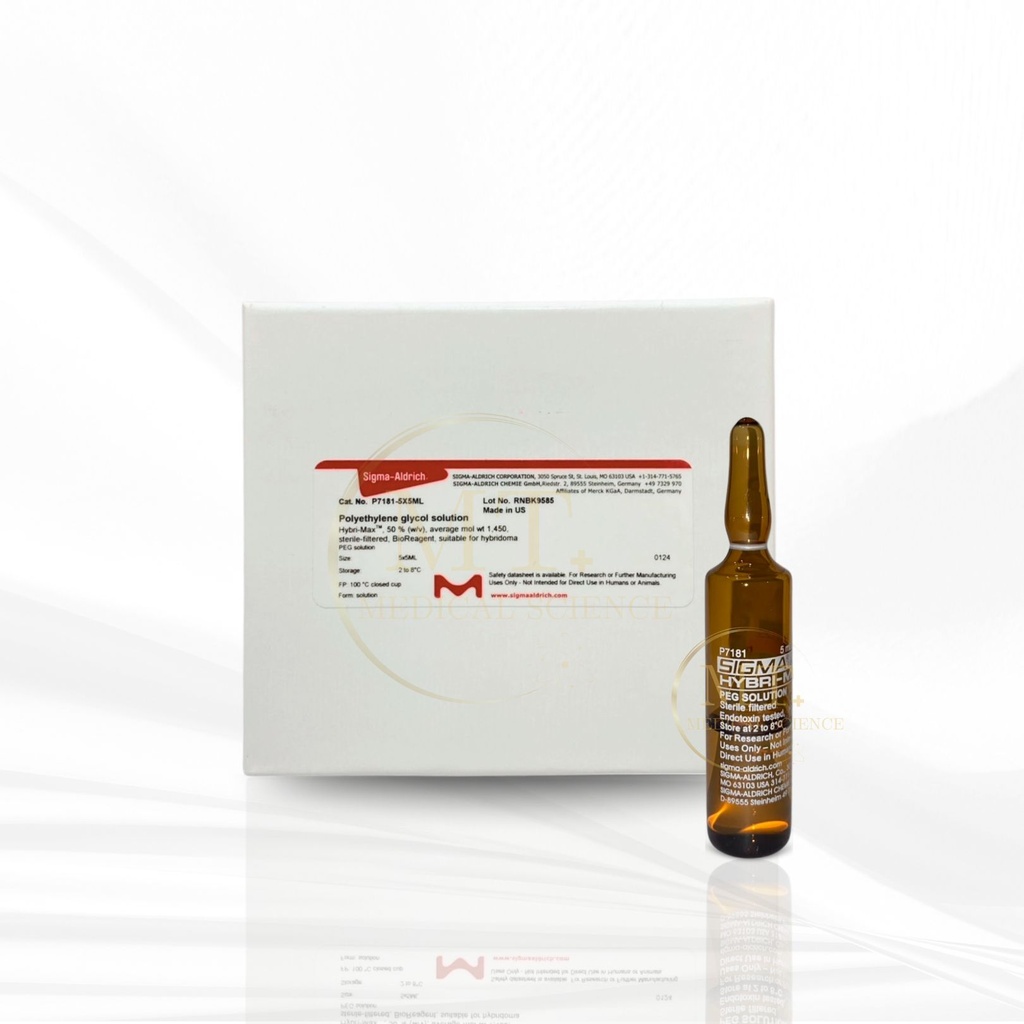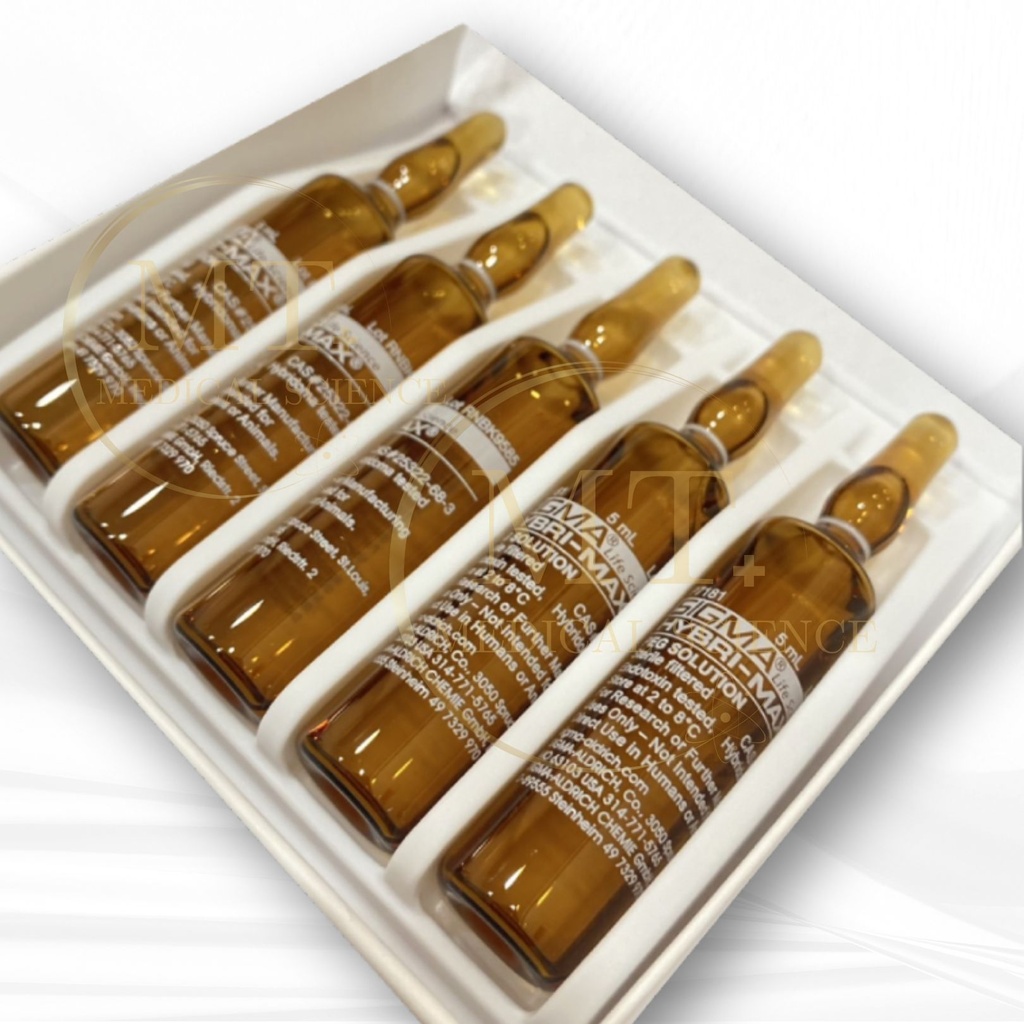General description
Polyethylene glycol (PEG) is a polymer of ethylene oxide and
water, obtained upon condensation.[1]
Application
Polyethylene glycol solution has been used in the
hybridization of the following:
- irradiated
camel fibroblast cells with A23 hamster cells[2]
- mouse
splenocytes with Sp2/0-Ag 14 mouse myeloma cells[3]
- rabbit
splenocytes and cell line 240E-1[4]
Recommended for use in a normal fusion protocol requiring
50% PEG.
PEG is used as a fusogen to obtain hybridomas for monoclonal antibody
production. Induces cell hybridization.
Biochem/physiol Actions
Polyethylene glycol (PEG) is used in detergents, emulsifying
agents, soaps, metal costing process, pharmaceutical preparations and
cosmetics.[1] PEG is commonly used as a lubricant. It′s application is
also observed in chromatographic stationary phases.[5] PEG prevents
crystal formation in emulsions.[6]
Packaging
Packaged in sealed ampules under nitrogen.
Other Notes
Contains 50% (w/v) polyethylene glycol (Av. Mol. Wt. 1450)
in DPBS without calcium.
Reconstitution
Solution is ready-to-use. If a less concentrated solution is
desired, dilute with sterile DPBS without calcium (D5773). Some precipitate may
appear after being exposed to cooler, but should disappear as the solution
warms. Solution may be frozen if desired but should first be aliquotted to
avoid repeated freeze/thaw cycles.
Legal Information
Hybri-Max is a trademark of Sigma-Aldrich Co. LLC





